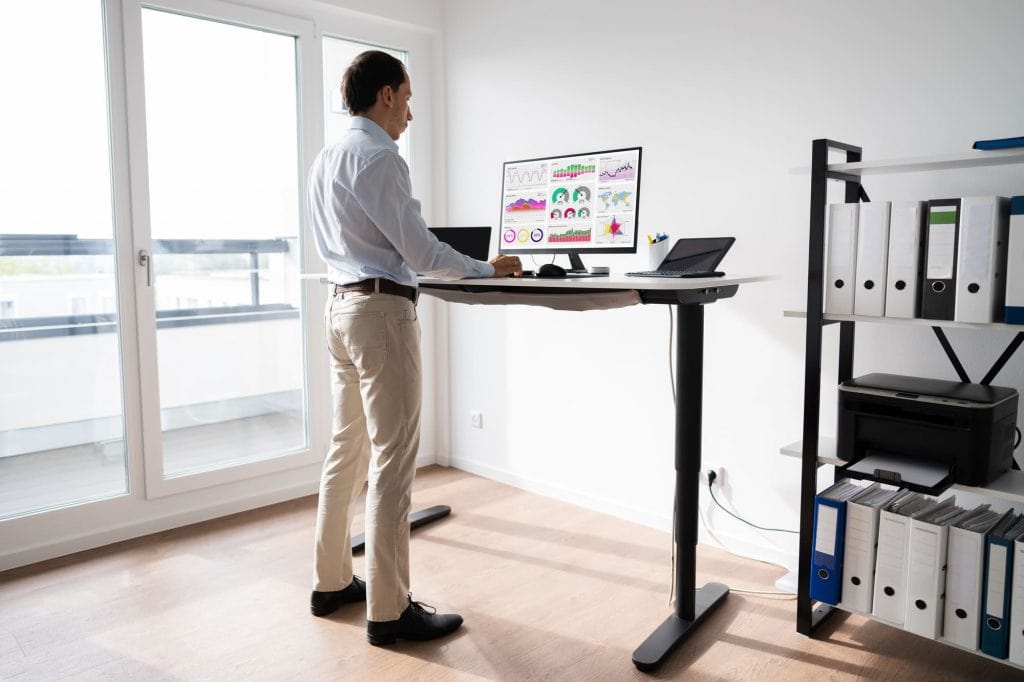*When you buy through links on our site, we may earn an affiliate commission at no additional cost to you.
Often time sitting is labeled as the new smoking. But is it true that sitting is that bad for you and your health? Is your office job slowly killing you? Or is it a misconception? How often should you get up from your desk and take a break?
- What do recent studies suggest?
- What happens with your body when you sit all day?
- What are some mindful tips you can integrate into your job and life?
Read on to find out what is true and what could be a little exaggeration.
Table of Contents
What Studies Found And Suggest
Recent studies show a correlation between sitting and numerous negative effects on the human body and health.
The negative effect of sitting and health risks:
- high blood pressure
- back pain
- obesity
- depression
- increased insulin resistance
- deep vein thrombosis
- heart disease
- cancer
- increased risk for death and higher mortality rates

Feel the urge to stand up now?
Researchers found clear evidence of long-term effects of sedentary behavior on the human body. But of course, you won’t die from a stroke right away just because you sit sometimes.
Also, there is something very important to consider when talking about the researchers’ results from studies: What is the lifestyle of the participants?
But more about that later on.
Why Regularly Sitting All Day Long IS Really Bad For You
There are some side effects that are more likely to occur than others. For example, back pain will be more likely to occur for office workers than a heart attack. But let me explain the correlations step by step.
Back Pain
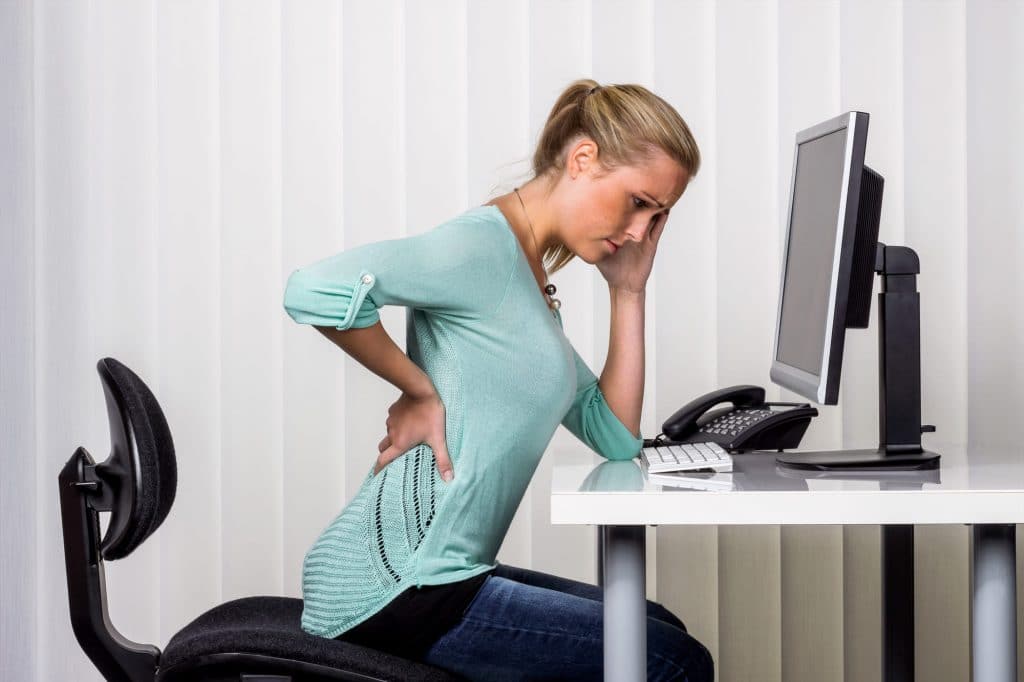
Sitting causes constant hydrostatic pressure in your spinal disks. The problem with that is, that your spinal disks are not supplied with blood. They rely on movement to get nutritive substances.
By sitting all day your disks will degenerate. That can lead to a herniated disc over time, which can cause a lot of pain in your back and your legs.
Also sitting causes your spine to a C-shape, instead of its natural double-S shape. Starring at a monitor in a bend over position will also lead to neck stiffness and also headaches.
Furthermore, in the sitting position, your hips are constantly bent causing hypertension or “shortening” of the hip flexor muscles. Again this causes unnatural pressure on the spine by pulling your lower back into hyperlordosis.
So from an orthopedic point of view, the effects on your musculoskeletal system are quite evident.[1]
Cardiovascular System

A study partly covered by the British Columbia University discovered a link between sedentary behavior and the risk of diabetes and cardiovascular disease.[2]
The bent-over position makes breathing freely harder. Try to lean forward into a curled-up position and take a deep breath.
Did you notice? You can’t…
Your lungs can function properly in this position. Now try to posture up and repeat. Feels much better right?
Standing up helps to fill your lungs with more oxygen and let your heart beat a little stronger.
Generally speaking, inactivity is bad for your heart. It causes a chain of reactions that starts with weight gain and cluttered veins and can lead to less performance of your heart or even to a thrombus that causes a heart attack.
Death
Researchers designed a study with 7985 adults aged 45 and older using a hip-mounted accelerometer to measure sedentary time over a time period of 4 years.
The objective:
To examine the association between objectively measured sedentary behavior (its total volume and accrual in prolonged, uninterrupted bouts) and all-cause mortality.
Out of those nearly 8000 participants, 340 people had died over a median follow-up of only 4 years!
Those participants who have been classified as high for sedentary characteristics (office workers, high sedentary time, over 12 hours per day etc.) had the greatest risk for death.
You can find the study on the annals of internal medicine site.[3]
The Truth About the Side Effects Of Sitting And The Holistic Point Of View
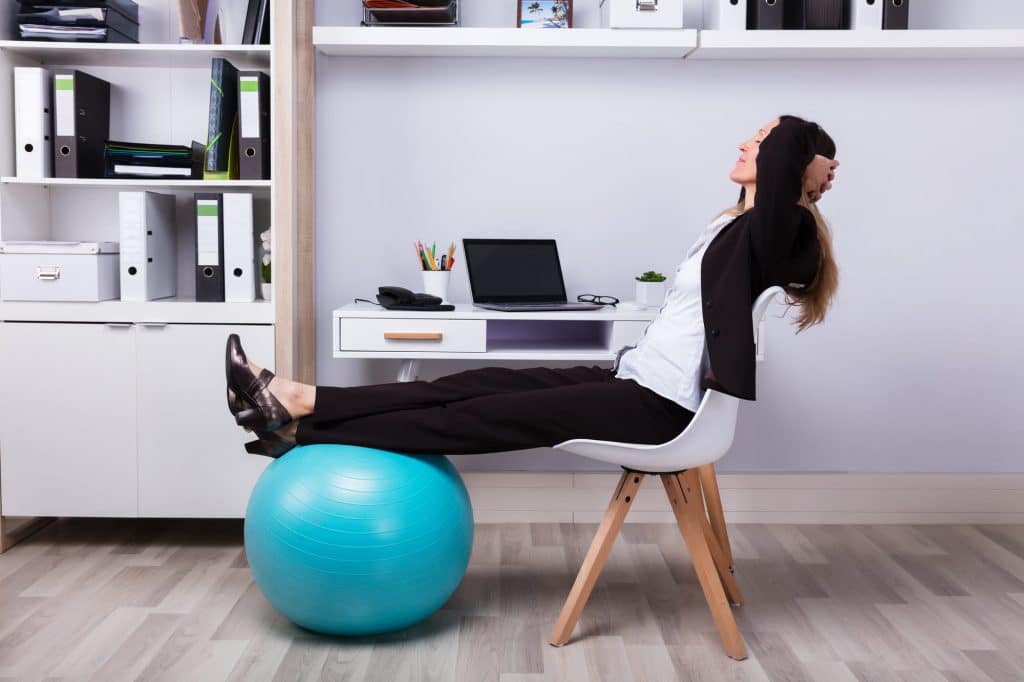
It’s true: Sitting is bad for you! Speaking in a general way. But the development of side effects and disease strongly depends on your lifestyle.
Assuming you are an active and healthy person, who is physically active on a regular and adequate basis, you don’t need to worry.
When you create a balance in your life, do some fitness or sports you can compensate for sitting in front of a computer at work. The positive effect of physical activity will counter any potential health problems.
Unfortunately, researchers can’t control every aspect of a study and often times don’t know/show the participants’ overall lifestyle. The importance of lifestyle and healthy habits can change perceptions.

Assuming you have a mixed group of people with all kinds of lifestyles, you’ll always find negative side effects of anything you research over a long period of time.
So the peer group of people with an inactive lifestyle who prefer to watch tv and sit down all day, even after their workday will always show negative effects.
Even if they measure 12 hours of sedentary time in participants, it’s possible the some of those live a healthy lifestyle and still integrate 2 hours of fitness in their day while eating healthy and others smoke, drink, eat bad and party all night.
So especially people with inactive lifestyles who are watching tv all day, drinking, smoking, have bad nutrition, and are also sitting all day at work will have a much higher risk of disease.
Is Standing The Remedy To Sitting Related Health Issues?
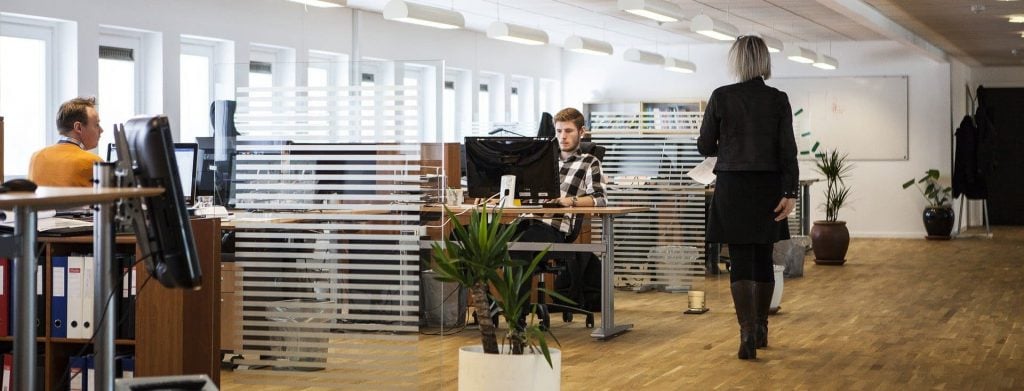
There are some misconceptions about standing as well, but long story short: Standing is way better than sitting.
Remember how sitting is causing back pain and the risk for coronary diseases. If you stand you can breath more freely, open up your hip flexors, and naturally move around a little bit that also involves your spine.
But, if you have heard that standing helps you to lose belly fat, I have to disappoint you. Burning body fat or getting in shape needs way more effort than standing. Of course, standing burns more calories than sitting, but the difference is insignificant in terms of creating a bikini body.
But standing per se is already beneficial for your health. Definitely more beneficial for your health than sitting.
Another study from the cardiovascular division at the Mayo Clinic found out that standing alone prevents the increased risk of cardiovascular disease already.[4]
That’s because standing requires more muscles than sitting. Whenever a muscle is used they consume energy and burn calories (sugars and fats) and can lower cholesterol.
Get Up And Move Or Even Get A Stand-Up Desk
Now that you know how bad sitting is, it’s time to get up and walk around…or get a standing desk.

Those come in basically three options:
- electrically adjustably standing desks
- manual adjustable standing desks
- standing desk converters (those you put on your actual desk)
Which one you wanna choose is up to you and your preferences. But they all share the benefits of being able to stand while working on your computer.
Related: 8 Benefits of Standing Desks
Thus you’ll be using more muscles and moving around more automatically and prevent a lot of health risks. The next level would be a treadmill desk. That’s right. It’s exactly what you think of. A treadmill combined with a desk.
A very cool feature of some electrically adjustable standing desks is, that they will elevate automatically in certain time intervals after setting up the function.
So even if you’re deeply involved in your work and sunken in a flow state…your table will remind you to stand up!
Make It A Habit
Here’s the tricky part. After learning about the benefits of standing up from the computer screen and moving around, a lot of people implement that for a couple of days.
Then they find one excuse after another and increase their sitting time gradually again, up until they don’t stand up anymore.
The secret: Make it a habit!
Set an alarm and force yourself to stand up. Move around and take a little break. Maybe introduce a little stretching routine.
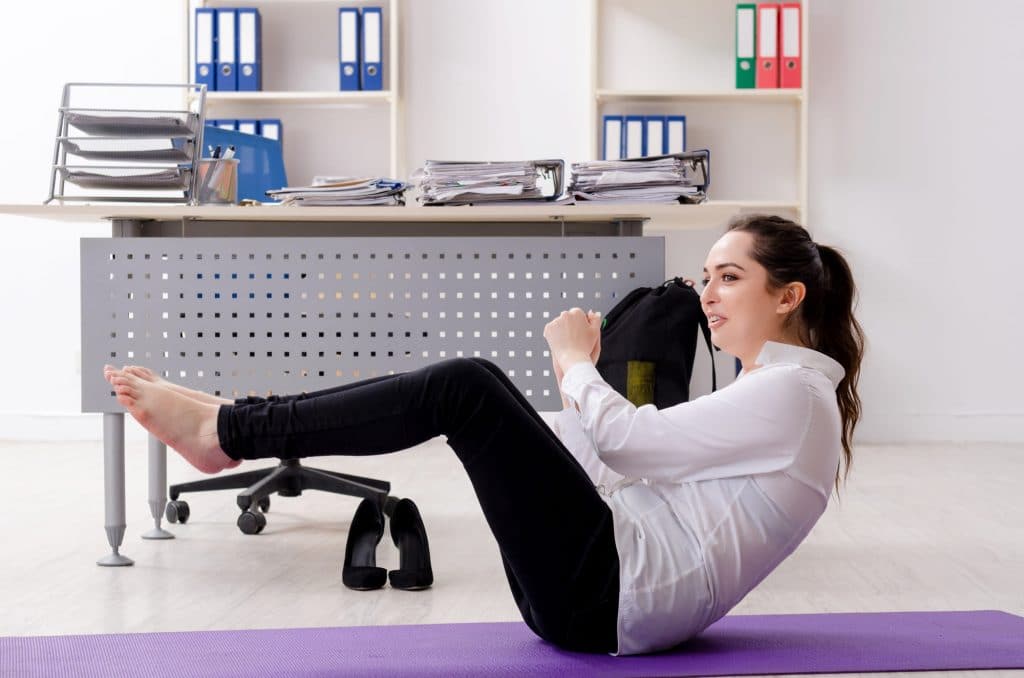
Anything that helps you get those health benefits of cutting as much sitting time as possible.
Introduce triggers and connect them with activities or little exercises. Like every time you finish a certain task make 10 squats. Or do it hourly, before the lunch break, after a long call, when you need to copy something…you get the point.
Just think about some specific triggers that will help you move around.
When you can manage to integrate 30 minutes of activity time into your day you win!
How often should you get up from your desk now?
You should stand up from your desk at least every hour or at least two hours!
But as always, it depends as well. People are different, have different lifestyles, tasks, jobs, and time frames. No one really knows what the “best” time is to stand up.
Some people say you should stand up every half hour, but let’s be honest here… it’s not realistic at all.
Standing up every half hour and sitting down again will leave you distracted for the whole day and decrease your productivity.
It’s not only about standing up from the computer but also being productive and effective in your workday. Stand up as often as you can and find a balance between working productively and being active.
The more you get up and move the better for your health benefits.
What Can You Do Instead Of Sitting All Day?
Here are some suggestions.
- Set a timer for drinking water. Every time it goes off get up and grab a glass of water. But not from a bottle on your desk, but from the kitchen or water dispenser in the office if you have those.
- Walk during your breaks. How much time do you have left after your lunch break? Don’t spend it sitting around and drinking coffee. Take your coffee cup outside and walk if you have the time.
- Visit your co-workers. If you need something from your co-workers stand up and pay a visit instead of calling them.
- Use the stairs. Need to get on the upper floors? Great! You have an opportunity to use the stairs instead of the elevator.
- Set up your desk for walking. Don’t place the printer right at your desk. Put it somewhere you need to stand up when you print or copy something.
- Track your steps. Tracking sets a clear goal that increases the pressure to fulfill. Use your phone, an activity monitor, or a pedometer on your wrist.
- Use a treadmill desk or desk cycle. Those will help to move even while you’re working.
- Use a balance disk. Get something unstable to sit on or even an exercise ball, so you have to move around and stabilize your seat.
- Use the bike to get to work. No bike? Using the public transport system? Then don’t use the station that is closest to your home, but get out a little earlier and walk the rest.

You can use your creativity to squeeze some active minutes into your day. You’ve probably heard about the WHO recommendation to walk 10.000 steps every day?[5]
If you can manage to make 10k steps per day you’re considered active already.
You just need to be honest and discipline yourself. Set the reminder and your triggers and force yourself to get some activity until it becomes a habit.
Conclusion – Not Every Half Hour But As Often As You Can
Experts consent: We are designed for activity!
Some famous people knew that already hundreds of years ago and started standing while working.
Office workers can improve their sitting ergonomics as much as they want but our bodies aren’t made for sitting on a chair for long hours.
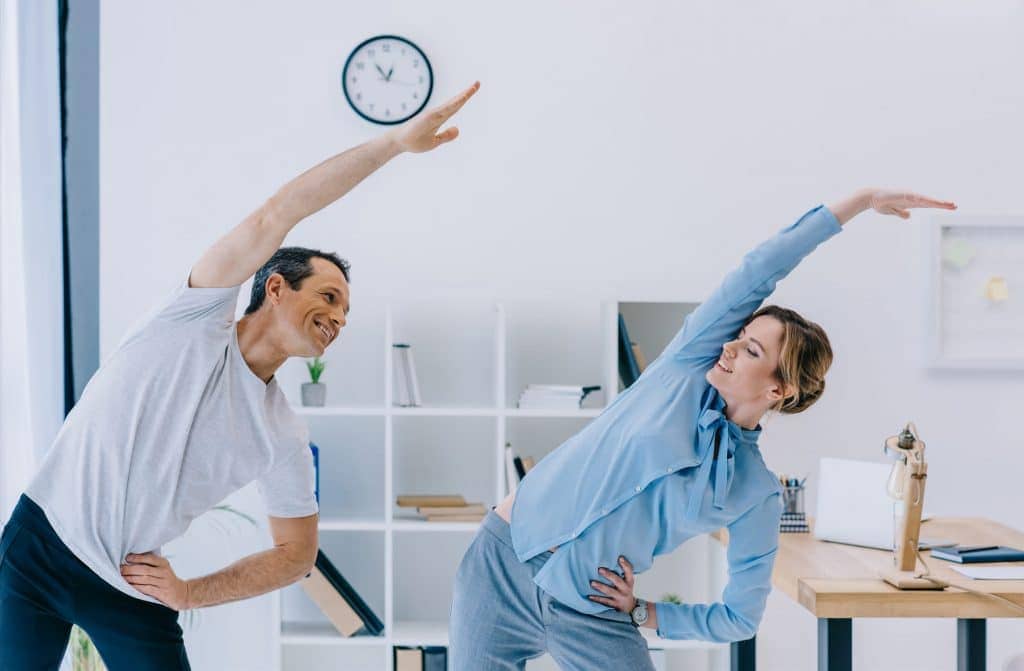
We should be changing positions as often as we can and get as much activity as possible.
Standing up every half hour will be totally challenging and unrealistic for most of you, but you’re still left with a lot of options to take short breaks and boost your activity.
Now you know some tricks and tips to improve your health by implementing an active lifestyle.
Invite your colleagues to introduce some peer pressure. Moving together is also more fun!
Actively remind yourself to stand up from your desk chair as much as you can, maybe even do some yoga stretches to activate those muscle groups you didn’t even know exist.
Furthermore, implement more activity outside of work. Where do you park your car when you visit the grocery store next time? Right in front of the entrance? From now on, always look for a parking lot that forces you to walk a little bit.
If you can manage to squeeze in 10.000 steps or 30 minutes of motion in your day, you win!

